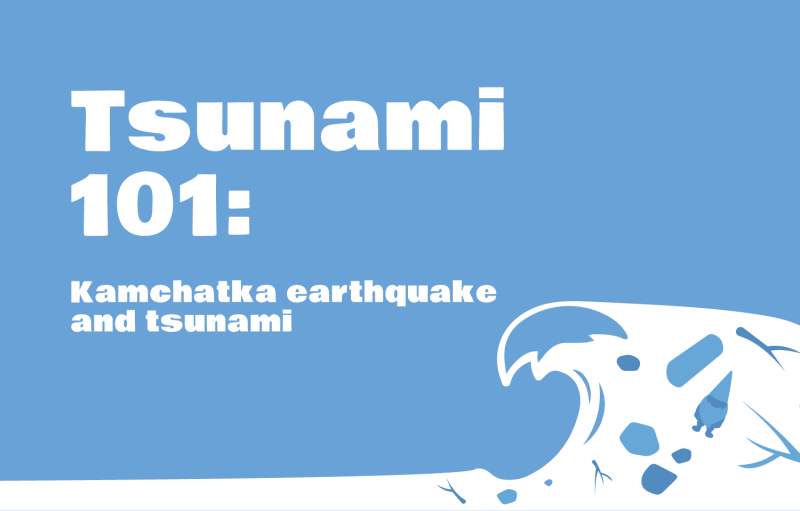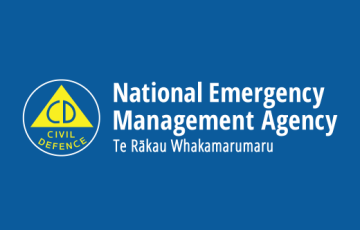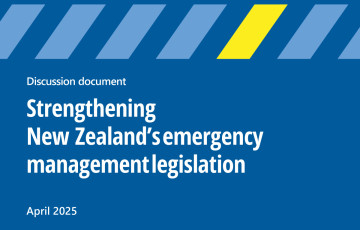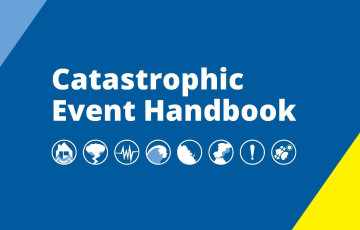M8.8 Kamchatka earthquake and tsunami

On Wednesday last week, there was an 8.8 magnitude earthquake off the Coast of Kamchatka in Russia. This was one of the largest earthquakes we have recorded on modern seismic equipment.
Thank you to everyone who followed our advice and kept away from beaches and other marine areas during the tsunami activity.
About the tsunami
The first information available was that the earthquake was magnitude 8.0. At that magnitude, scientists weren’t concerned about a tsunami threat for New Zealand. But this was then revised to 8.7 and later 8.8. A magnitude 8.8 earthquake is nearly 10 times more powerful than a magnitude 8.0.
The magnitude 8.8 earthquake caused a tsunami that impacted all of New Zealand’s coastline. Fortunately for New Zealand, the waves arriving at our coasts did not require evacuation, with the largest recorded wave – 55 cm – striking the Chatham Island coast shortly after 6 am. Some parts of the Pacific experienced waves up to 3-5 metres high and more than two million people were evacuated from the shore.
When we think about tsunami, we often imagine a large wall of water. But tsunami are not like regular ocean waves and small tsunami can still be dangerous. A 10-50 cm tsunami might not sound like much, but it can move a lot of water and debris. And strong tsunami surges may not be obvious from the shore.
Surges come in over several minutes and then recede just as fast. Surges can continue for hours or days as the tsunami continues and bounces around the Pacific. Last week, the tsunami reflected from the Americas and affected water heights and currents almost 24 hours after the first waves arrived in New Zealand.
In the Chatham Islands, the reflected wave was actually 15cm bigger than the initial wave on Thursday.
Emergency Mobile Alerts
To warn people about the dangers of the tsunami and advise people to stay away from waterways and beaches, we sent out two Emergency Mobile Alerts. These were both sent to coastal areas of New Zealand.
The first was issued at 4.13pm on Wednesday. It was critical to issue it before nightfall, because we know many people live on boats, or plan ahead for early fishing trips or a dawn surf.
The second was issued at 6:30am on Thursday. This made sure we reached the thousands of people who normally head to the waterfront to walk the dog, go for a mid-winter swim, go surfing, collect kaimoana, or take the dinghy out.
We knew there would be criticism of the 6:30am alert and that we would wake people. But we also knew the risk of the tsunami and the serious consequences if we didn’t issue it. Every decision to send an alert is based on scientific advice and international best practice.
We also know there were some issues with people receiving multiple alerts in the middle of the night. There’s lots of reasons this might happen. Some phones have an optional alert reminder feature, you might get another alert if your phone switches between 4G an 5G or if you turn your phone off and on again. This includes if your phone updates and restarts in the night.
But we encourage everyone to give us feedback at www.research.net/r/EMA-feedback. This helps us understand any issues we might not be aware of and make ongoing improvements to the system.
We’ll take a good, hard look back at this tsunami response, and figure out how we can keep improving, one emergency at a time. But one thing won’t change. We will keep on making those hard calls because your safety is non-negotiable.
Emergency Mobile Alert frequently asked questions
Emergency Mobile Alerts are messages about emergencies. They are sent by authorised emergency agencies to mobile phones.
How the alert displays on your phone is determined by your phone’s manufacturer and your phone settings.
Give us feedback about Emergency Mobile Alert at www.research.net/r/EMA-feedback
Can I opt out of alerts?
As Emergency Mobile Alert is about keeping you safe, you won’t be able to opt out.
We do not target specific phones, instead we broadcast to a targeted area that is at risk. For this reason, we cannot exclude your specific phone. Emergency Mobile Alert does not use your mobile phone number or collect information about you.
Your phone may show optional settings used in other countries. But in New Zealand we will use a special broadcast channel that is always on.
Why did I receive an alert multiple times?
If your phone moved from a 3G to a 4G network during the time of the broadcast, you will have received an alert from both networks. The same thing would have happened if you turned flight mode on and off. Or turned your phone off and back on during the broadcast period.
Some phones have an optional alert reminder feature turned on. This can cause the phone to alarm repeatedly during the broadcast.
If your phone automatically updates overnight and restarts, you might get another alert during the broadcast period.
How do I find my alert to read it?
If you received an Emergency Mobile Alert, you might still be able to find it on your phone.
For Android phones, each Android phone is different. But emergency alerts are generally found in your 'Messages' app.
For iPhone users, the alert will be in your notifications. Access your notifications by swiping down from the top of your screen. If you delete your notifications, you will also delete the alert.
Why is the sound so alarming?
The sound used for Emergency Mobile Alert is based on an international standard. While it can be frightening or annoying, it was chosen to get your attention as it is unpleasant to the human ear. Those alerts may not sound very friendly, but it’s us looking out for you.
Why did someone else in my household receive it but I didn’t?
There are many reasons you may not receive an Emergency Mobile Alert message. We encourage everyone to rely on lots of different ways to stay informed.
We expect most phones purchased after 2017 to receive Emergency Mobile Alerts. Your phone also needs to have cell reception and up-to-date software.
You won’t get an alert if your phone is off, in flight mode or out of cellular coverage.
Emergency Mobile Alerts are broadcast to all capable phones from targeted cell towers. If your phone is connected to a different cell tower to someone else in your household, only one of you might get a targeted alert.
Learn more
Check out an opinion piece from NEMA’s Chief Executive Dave Gawn on the Stuff website.
Learn about the science of the Kamchatka earthquake and tsunami on the GeoNet website.
Learn what to do before, during and after a tsunami at getready.govt.nz/tsunami
Learn about Emergency Mobile Alert and find answers to frequently asked questions at getready.govt.nz/ema
Published: Aug 5, 2025, 4:16 PM



